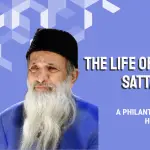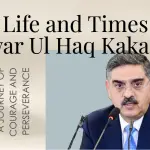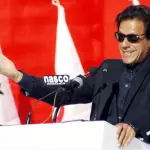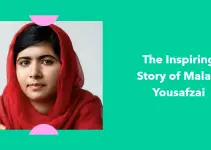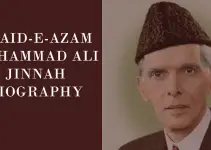Benazir Bhutto made history as the first woman to lead a Muslim-majority country when she became Prime Minister of Pakistan in 1988. Her meteoric rise to power at just 35 years old captivated the nation but also set the stage for decades of turbulence and tragedy to come.
This extensive biography explores Benazir Bhutto’s origins as the privileged daughter of a political dynasty and charts her emergence as a champion for democracy in Pakistan. Her controversial two terms as Prime Minister were marked by allegations of corruption that would hound her even in exile. After years out of power, she returned to Pakistan in 2007 to challenge the military rule of General Pervez Musharraf, only to meet the same violent end as her father at the hands of extremists.
Benazir Bhutto left a complex legacy defined by her barrier-breaking role tampered by instability and questions of impropriety. Through examining her life and controversial rule, this biography provides intriguing insights into dynastic politics in Pakistan, the nuclear arms race with India, and the rise of the Taliban – issues that the world still grapples with decades after Bhutto’s death.
Early Life as a Political Princess
Benazir Bhutto was born on June 21, 1953, in Karachi, Pakistan. She grew up enjoying immense wealth and status as the eldest daughter of former Prime Minister Zulfikar Ali Bhutto. Her family belonged to Pakistan’s landowning aristocracy and lived in luxury between their estate in Larkana and the seaside palace in Karachi.
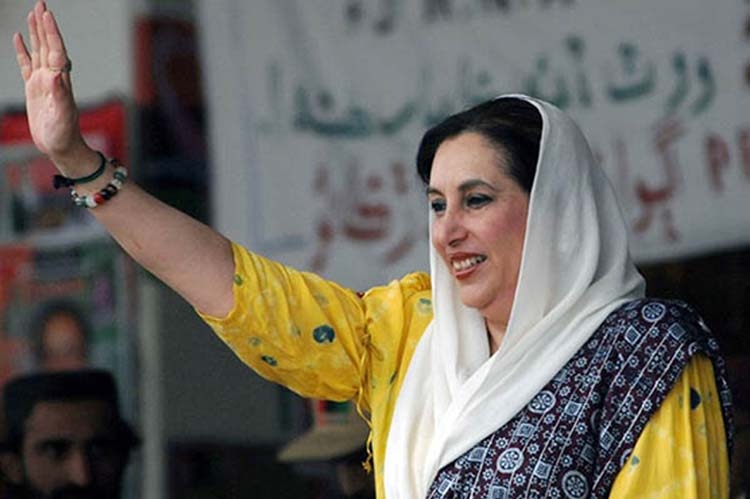
From an early age, Benazir was groomed to continue the Bhutto dynasty’s reign over Pakistani politics. She received the best education money could buy, first at an elite convent school in Karachi and later at Harvard University and Oxford University in the West. After completing her undergraduate studies at Harvard, she returned to Pakistan rather than staying abroad and enjoyed a typical socialite lifestyle.
The sheltered existence of wealth and privilege changed abruptly in 1977 when Benazir was just 24 years old. That year her father, Prime Minister Zulfikar Ali Bhutto, was overthrown in a military coup by his hand-picked Army Chief General Muhammad Zia-ul-Haq. General Zia imposed martial law and used the secret police to quash dissent and consolidate power.
Benazir’s father was arrested by General Zia’s forces and charged with authorizing the murder of a political opponent. After a sham trial, Zulfikar Ali Bhutto was convicted and sentenced to death by hanging. Despite global calls for mercy, he was executed on April 4, 1979, when Benazir was 26. Watching her father persecuted and killed was a turning point that transformed Benazir from a socialite into an activist.
Emergence as a Democracy Crusader
Motivated by her father’s brutal execution, Benazir resolved to carry on his unfinished mission and oppose the military dictatorship of General Zia. She returned to exile in England and enrolled at Oxford University. While completing her master’s degree and Ph.D., she spoke out internationally against Zia’s human rights abuses and suppression of dissent in Pakistan.
In 1982, Benazir Bhutto became the head of the Pakistan People’s Party (PPP) founded by her father. She inherited the party leadership based on name recognition and loyalty to the Bhutto dynasty rather than grassroots support. This kicked off a power struggle with her mother Nusrat Bhutto, who had assumed control after Zulfikar’s death. Benazir ultimately consolidated her position as chairperson of the PPP, which her mother had run in name only during her imprisonment.
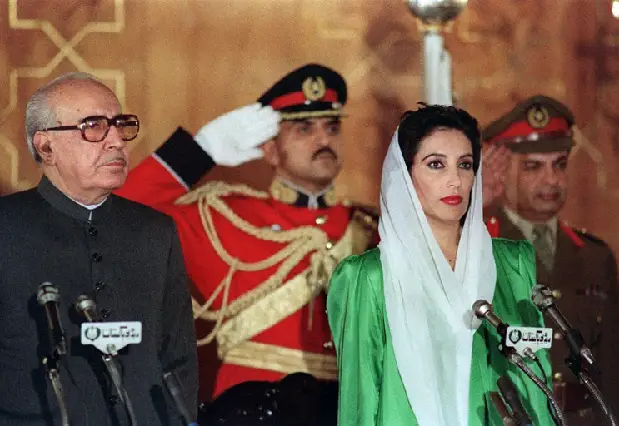
As head of the largest opposition party in Pakistan, 28-year-old Benazir organized resistance to General Zia’s regime from abroad. In 1986, she returned to Pakistan against the military’s wishes to lead mass pro-democracy rallies calling for Zia to end martial law. She was arrested and detained under house arrest for several months.
Benazir’s arrests made her a symbol of the pro-democracy movement. When General Zia finally lifted martial law in response to civil disobedience, Benazir led the PPP to victory in the 1988 parliamentary elections. At just 35 years old, she became Prime Minister and the first woman to head a democratic government in the modern Muslim world.
First Term as Prime Minister (1988-1990)
Benazir Bhutto entered office with immense expectations from voters to restore democracy and stability. However, she faced major obstacles from the still-powerful military and older male politicians who resented her youth and gender. Her fragile coalition government was hampered by constant opposition.
Major events and initiatives during her first controversial term as Prime Minister included:
- Being forced to appoint a military general as President, limiting her power
- Accusations of arrogance and hiding her lavish lifestyle from the poor populace
- Altering the constitution to curb presidential powers – ruled illegal by Supreme Court
- Frequent clashes with opposition politicians who accused her of rigging elections
- Starting a nuclear weapons program in response to India’s strides in atomic power
- Allegedly authorizing violent crackdowns on ethnic minorities
With gridlock in the legislature, allegations of autocracy, and letting her husband run amok diplomatically, Benazir quickly lost the confidence of both the public and the military establishment. In August 1990, President Ghulam dismissed Benazir from the role of Prime Minister and called new elections. She had only been in power for 20 months.
First Stint Out of Power (1990-1993)
After her ousting in 1990, Benazir Bhutto spent three years as the opposition leader in Parliament. She continued to invoke her father’s legacy and attack the administration as repressive and illegitimate. However, the public had not forgotten the controversies and missteps of her first term.
In elections late in 1993, Benazir Bhutto and the PPP suffered a sound defeat. The new Prime Minister was Nawaz Sharif, a conservative businessman tied to the military. Bhutto herself lost reelection in her district and was forced to move from her estate. Sharif opened corruption investigations into Benazir’s tenure, further damaging her credibility.
Benazir spent this period out of power living in self-imposed exile in London and Dubai. She positioned herself as an opposition leader and gathered resources to take back the Prime Ministership when possible. As Pakistan continued to struggle with weak governance and military interference under Sharif’s rule, Benazir plotted her return.
Second Term and Dismissal (1993-1996)
After just three years of the Sharif administration, Benazir Bhutto rode a wave of anti-incumbency back into power in the 1993 parliamentary elections. Sharif attempted to rig the results against her but relented under military pressure to allow her victory. At 40 years old, Benazir became the first Prime Minister in Pakistan’s history to serve two non-consecutive terms.
However, Benazir’s second term was plagued by the same unrest and controversy as her first. Significant developments included:
- Continued clashes with the new President Farooq Legari over power-sharing
- Accusations of major corruption and kickback schemes against both Benazir and her husband
- Deadly crackdowns by security forces on Sunni and Shia extremists
- Raising import tariffs and mishandling state-run industries leading to economic downturn
- Resuming Pakistan’s nuclear weapons development program and missile tests
In late 1996, the President Utilized the 8th Amendment to dismiss Benazir Bhutto from leadership again amidst corruption allegations. Legari then dissolved the National Assembly and called for fresh elections. After just three tumultuous years in power, Benazir was ousted a second time through the same constitutional tools she had opposed.
Second Stint in Opposition (1996-2007)
This second dismissal in 1996 marked the end of Benazir Bhutto’s tenure as Prime Minister for life. She again faced court cases over corruption during her terms in office. Eventually, she migrated to self-imposed exile in Dubai to escape prosecution.
From abroad, Benazir continued to lead the Pakistan People’s Party in opposition to the regimes of the next decade. The end of the 1990s saw Prime Minister Sharif overthrown in a military coup by General Parvez Musharraf. When Musharraf himself took power, Benazir united with her old foe Nawaz Sharif to challenge his legitimacy.
However, neither of the two civilian leaders was able to return to Pakistan or seriously threaten military rule. Benazir primarily criticized Musharraf’s complicity with the Bush administration in the War on Terror after 9/11. She presented herself as the voice for democratic rule and opposed Musharraf’s authoritarianism.
After eight years abroad, the prospects for Benazir’s return finally improved in 2007 when Musharraf’s popularity plummeted after he suspended the chief justice. Sensing an opportunity, Benazir negotiated with Musharraf and gained immunity from prosecution so she could run for Prime Minister again. She returned to Pakistan in October 2007 despite death threats from extremists.
Assassination While Campaigning for Reelection
Mere weeks after her risky return in 2007, the extremist threats against Benazir Bhutto shockingly came to fruition. On December 27, she was assassinated while leaving an election rally in Rawalpindi. As she stood and waved through the sunroof of her armored vehicle, an attacker shot her multiple times before detonating a bomb next to the vehicle. The combined bombing and shooting killed Benazir along with nearly two dozen other civilians.
Benazir Bhutto was just 54 years old when she was murdered. Al-Qaeda commander Mustafa Abu al-Yazid claimed responsibility, calling her killing revenge for her support of the U.S. war on terror. However, the Pakistani Taliban also vowed to eliminate her, and her supporters accused the Musharraf regime of being complicit in or negligent in preventing the assassination.
Benazir Bhutto was buried next to her father at their family mausoleum in their home province of Sindh. Her violent assassination ended the tumultuous Bhutto family dynasty. Her husband Asif Zardari eventually became President, but mainly due to sympathy for her martyrdom. He later lost reelection and stepped back from politics due to health issues and lack of popular support.
The unanticipated assassination cut short Benazir Bhutto’s political comeback. Tragedy and controversy marked her life from her father’s execution through her barrier-breaking yet turbulent Premierships. However, in death, she became an enduring icon of democracy for her followers. The PPP continues to invoke her as a rallying symbol.
Controversial Legacy as a Flawed Pioneer
Benazir Bhutto left behind a complex legacy full of contradictions. On one hand, she broke boundaries as the first woman to lead a Muslim-majority nation and inspired followers with her charismatic rhetoric. On the other, her stormy rule was mired in accusations of vanity and corruption.
Supporters hail Benazir as a champion of democracy and a symbol of modern Pakistan. They gloss over her flaws and overreach in office to portray her as a martyr. To them, she spoke for the poor against military dictatorships despite her elite upbringing.
Critics alternatively remember Benazir as autocratic and dishonest, who squandered her initial popularity. They argue she cared more about self-image and power than serving everyday people. From their view, charges of illegally enriching her family were warranted.
As the first female Prime Minister in the Muslim world, expectations were tremendously high. But Benazir lacked the experience and temperament at a young age to back up her historic achievement. She failed to curb extremism or establish a stable democracy in her limited terms.
Ultimately, Benazir Bhutto’s rule was a story of unfulfilled potential. She broke gender barriers but could not transcend the dynastic elitism and family baggage she carried. Her tragic end cemented her as a controversial martyr. The true lasting impact of her life remains hotly debated in Pakistan.
Frequently Asked Questions about Benazir Bhutto
Benazir Bhutto’s history and controversial legacy spark many questions for those interested in Pakistan. Here are some common FAQs:
How did Benazir Bhutto become Prime Minister at such a young age?
Benazir owes her quick political ascent to being the daughter of former PM Zulfikar Ali Bhutto. She inherited leadership of the PPP which carried loyalty from her father’s reign. This name recognition propelled the 35-year-old to power.
What were the major controversies during her time as PM?
Benazir faced constant accusations of autocracy and corruption. Her husband flaunted wealth and power despite claims she would help the poor. She feuded with Presidents and disbanded opposition assemblies. Billions were allegedly stolen through kickbacks.
Why was Benazir Bhutto assassinated?
A Qaeda commander took credit, but the Taliban also threatened Benazir for supporting the War on Terror. Suspicions also fell on the Musharraf regime she campaigned against. However extremist elements saw her as an enemy.
What was Benazir Bhutto’s relationship with the military?
Hostile. Benazir tried to curb military power as PM. Generals conversely dismissed her twice for corruption and limited her authority. She later allied with Musharraf just for a chance to regain power before being assassinated.
How did Benazir change Pakistan’s trajectory?
Benazir made only modest impacts. Democracy remained tenuous under her turbulent rule. But she modernized Pakistan’s image by leading as an educated woman. Her bold confrontation with military rule also set a precedent.
Conclusion
Benazir Bhutto’s personal history embodied Pakistan’s political turbulence from the 1970s through the post-9/11 period. As the first woman Prime Minister in the Muslim world, she shattered stereotypes but failed to meet unrealistically high hopes.
Allegations of corruption and misrule cut short both her terms in power. Bhutto spent much of her career in exile opposing military dictators. However, her successful rise inspired future women leaders in Pakistan even amidst her flaws as a privileged dynastic heir.
While a controversial figure criticized for weakness in office, Benazir’s legacy as a champion for democracy endured. Her shocking assassination at the hands of extremists recast her as a martyr in the eyes of supporters. Over thirty years after her groundbreaking election, Pakistan still measures its leaders against the standard she established as the daughter of destiny.
